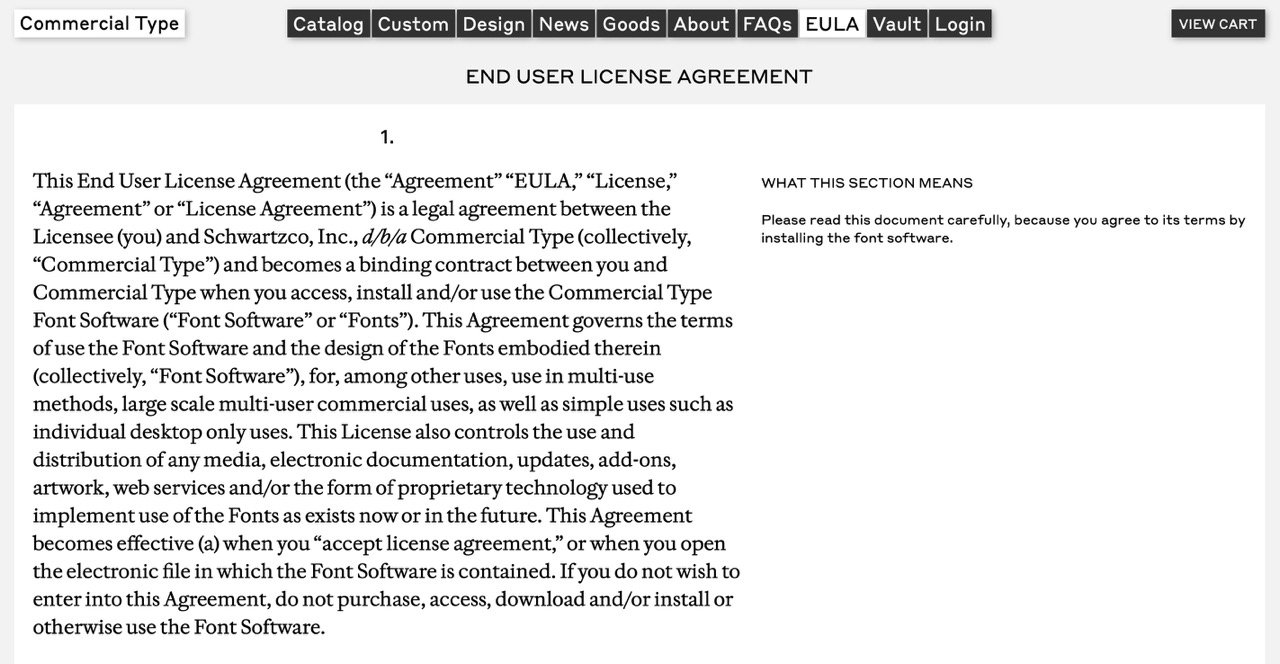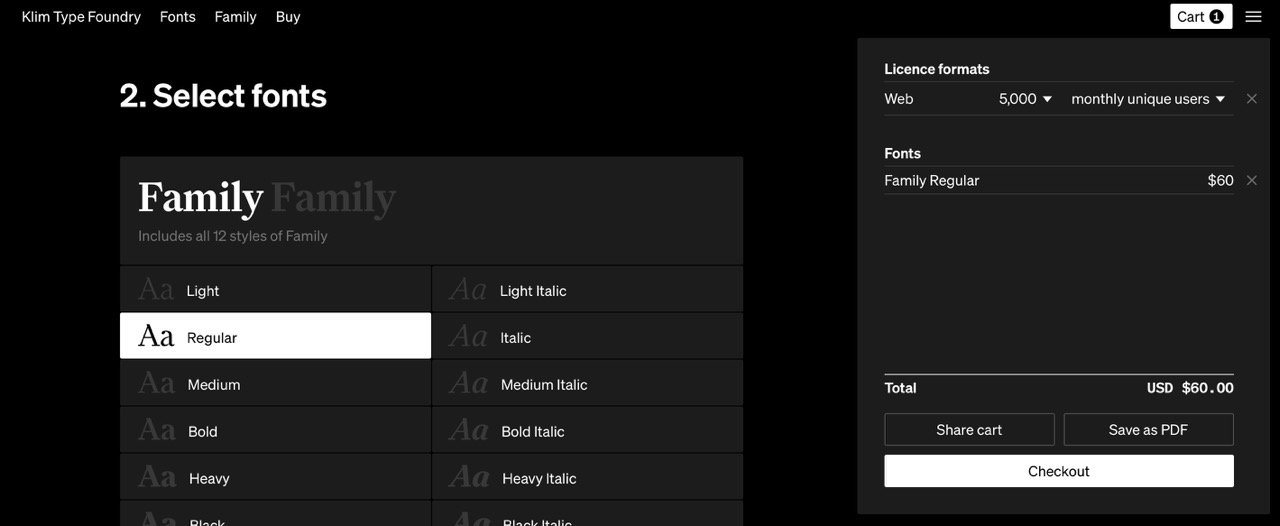I can’t remember the last time I undertook a design project where we didn’t use a commercial typeface. I often recommend these to clients because:
The world of commercial typefaces is broad and it opens up a range of high-quality options for a project
Using a commercial typeface is an easy way to level-up a design (though it won’t fix a bad design)
Supporting independent foundries is important
There’s no judgement on open source typefaces – I’m often pairing open source and commercial typefaces together.
Licenses
I’ve sourced typefaces from many different foundries over the years. The licensing terms vary by foundry: some are open and permissible, others are restrictive and trickier to work with.
It’s normal and reasonable for each foundry to have its own terms but there are practical considerations that come into play when recommending a typeface/foundry. Here are some of the factors that I consider.
Easy to find, clear terms
Commercial Type’s EULA is a great example of this: legal text on the left, plain-language on the right.

Lots of foundries rely on FAQs to clarify terms. This works to an extent but, assuming they cover the query you have, it’s often not possible to search the page for content inside accordions (e.g. [cmd] + [f] won’t find the content if it’s collapsed).
Shareable carts
I pass the licensing cost to my clients, usually getting them to purchase the licenses themselves. From a client perspective, this process can feel incredibly complex, so I’ve frequently recorded screencasts showing them exactly what to do.
Foundries that allow a cart to be shared make this process much easier. Here’s an example from Klim:

Practical payment terms
A couple of years ago, a well-known foundry quietly changed their web font license from a one-time payment to requiring an annual renewal. The change went unannounced, wasn’t referenced at any point in their checkout flow, and I only stumbled across it by accident when looking through their FAQs.
Setting this questionable method of changing pricing aside for a moment, it struck me that the foundry offered no subscription option at checkout. Do they expect clients/licensees to make a calendar note to renew their license each year?
I have no objection to typefaces being licensed on an annual basis, but the payment has to be easy and predictable (both for clients and the people pitching the typefaces to them).
Accessible pricing models
I’ve noticed a trend in newer pricing models where the licensing is more permissible or flexible. For example:
Users might be given the entire font family, not just a single cut
Licensing terms may be extended to cover most/all usage (web, desktop and media, etc)
Pricing is based on company size
On one hand, these are great as they simplify the terms and complexities of font licensing. The downside is that they may increase – significantly in some cases – the base cost, especially if you only need one or two cuts of a font in a single usage.
Swiss Typefaces are one of the best examples of doing this well:
Users can buy individual cuts, various discounted bundles or the entire font family
The licensing terms are permissive, allowing usage across a wide range of formats
Fees are reasonable and based on company size
This puts users in control of what they’re buying at reasonable cost.
Subsetting
In an age where many developers are trying to reduce the size of their sites, it’s useful to be able to subset fonts to reduce file size. It’s not uncommon to see terms that explicitly forbid this, or request a fee for the service.
Wrapping up
All that said, I appreciate all of these things are a fine-balance. Foundries need terms that work for them, at costs that make them sustainable businesses. But the same is true on the other side: the terms need to be clear and reasonable for busy clients to understand and give them the green light.
Not all these factors are dealbreakers, but there’s no doubt that these areas weigh in to the recommendations I make to clients.


